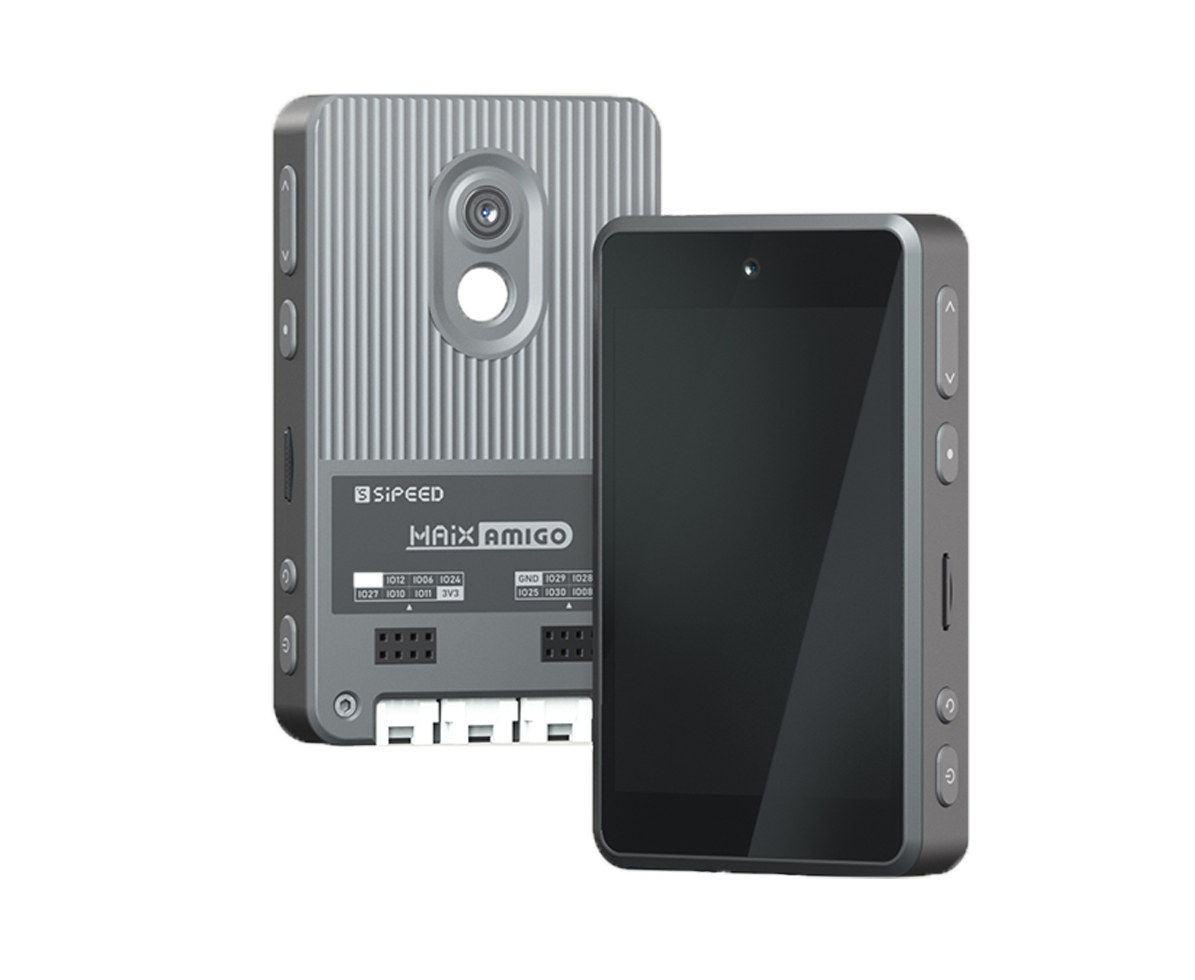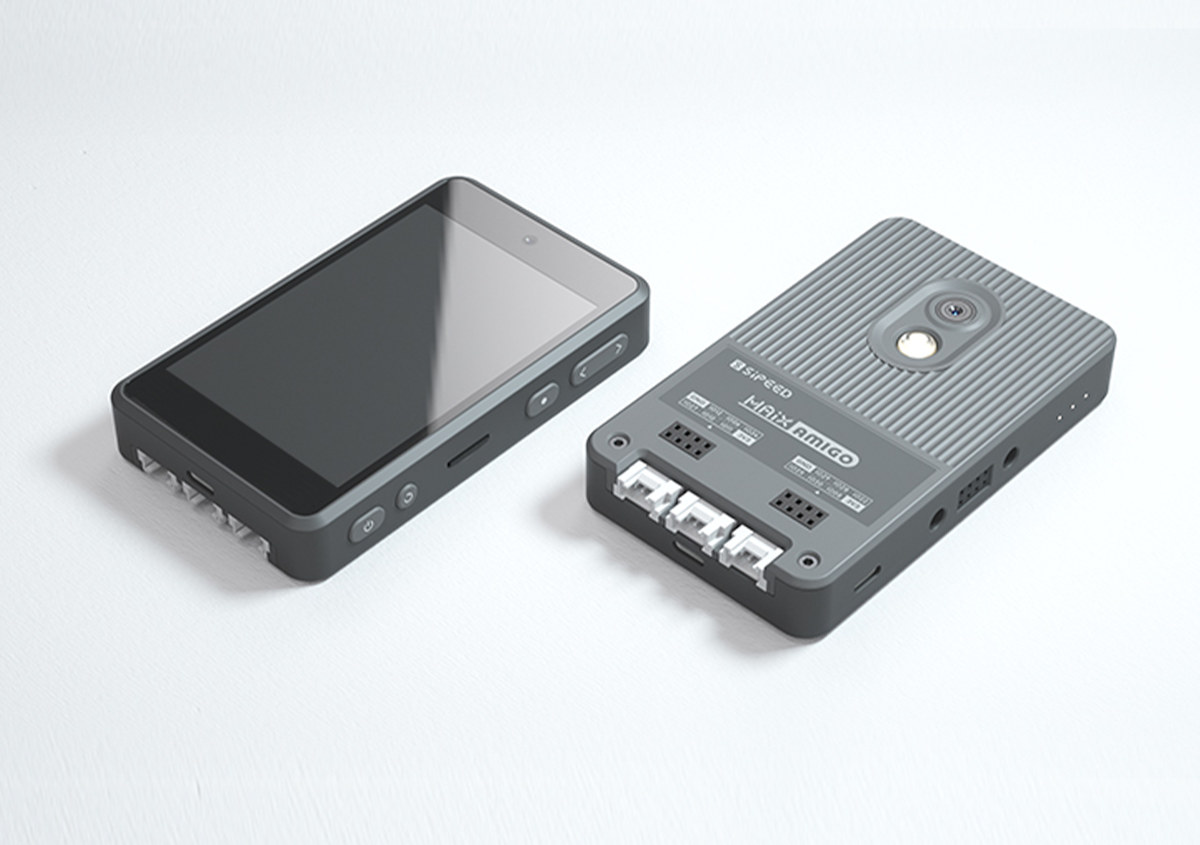Earlier this year, Seeed Studio introduced Wio Terminal a portable Arduino devkit with an LCD display, and expansion connectors and headers.
The company is now selling a similar looking devkit but for different applications with Sipeed Maix Amigo portable 64-bit RISC-V development kit powered by Kendryte K210 RISC-V AI processor and equipped with an LCD display, two cameras, a few buttons, and several I/O headers and Grove connectors.
Sipeed Maix Amigo specifications:
- SoC – Kendryte K210 Dual-core 64-bit RISC-V (RV64GC) processor with FPU @ 400 MHz (overclockable to 500MHz), 8MB SRAM, built-in AI accelerators for video and audio
- Storage – 16MB Flash, MicroSD card slot up
- Display – 3.5-inch TFT capacitive touch screen display with 480×320 resolution
- Camera
- VGA front-facing camera up to 30 fps (GC0328 sensor)
- VGA rear camera up to 60 fps (OV7740 sensor)
- Audio – Build-in microphone, optional 6-mic array
- USB – 1x USB Type-C port for power and programming
- Expansion
- 3x Grove ports with I2C, GPIO, etc…
- 3x 8-pin SP-MOD headers with GPIOs, 3.3V, and GND signals; compatible with ESP-01 ESP8266 WiFi module, PSRAM modules, etc…
- Sensor – Accelerometer
- Misc – Reset button, 3x function buttons, 3x LEDs
- Battery – 520 mAh Lithium battery
- Power Supply – Via USB-C port
- Dimensions – 104.3 x 63.3 x 16.5mm

Seeed Studio is now taking pre-orders for Sipeed Maix Amigo for $39.90 plus shipping, with delivery scheduled to start on August 27th.

Jean-Luc started CNX Software in 2010 as a part-time endeavor, before quitting his job as a software engineering manager, and starting to write daily news, and reviews full time later in 2011.
Support CNX Software! Donate via cryptocurrencies, become a Patron on Patreon, or purchase goods on Amazon or Aliexpress





